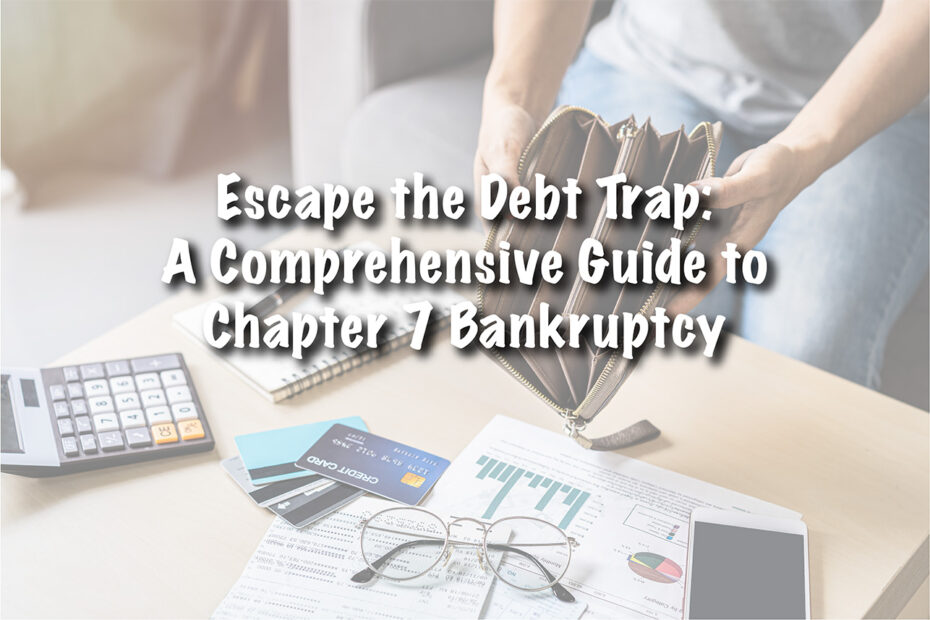Escape the Debt Trap: A Comprehensive Guide to Chapter 7 Bankruptcy
If you’re struggling with debt that you can’t seem to pay off no matter how hard you try, Chapter 7 bankruptcy might be an option worth considering. Chapter 7 is a type of bankruptcy that can help you eliminate most of your unsecured debts and get a fresh start. In this post, we’ll cover the basics of Chapter 7 bankruptcy, including how it works, what types of debts can be discharged, and who qualifies.
What is Chapter 7 Bankruptcy?
Chapter 7 bankruptcy is a legal process that allows individuals who are struggling with unmanageable debt to obtain a fresh start. In this type of bankruptcy, a debtor’s non-exempt assets are sold or liquidated by a court-appointed trustee. The proceeds from the sale of these assets are used to pay off creditors in order of priority, with secured creditors being paid first.
What Types of Debts Can Be Discharged?
Once the proceeds from the sale of the debtor’s assets have been distributed to creditors, most unsecured debts are discharged, which means that the debtor is no longer legally obligated to pay them. This includes debts such as credit card debt, medical bills, and personal loans.
What Types of Debts Can’t Be Discharged?
Not all debts can be discharged in Chapter 7 bankruptcy, however. Certain types of debts, such as most taxes, student loans, and child support, are non-dischargeable. This means that the debtor will still be responsible for paying these debts after the bankruptcy process is complete.
Who Qualifies for Chapter 7 Bankruptcy?
In order to qualify for Chapter 7 bankruptcy, if the debtor’s “current monthly income” is higher than the state median, then the debtor must pass a means test. This test compares the debtor’s income to the median income in their state. The test is designed to ensure that only those who truly cannot afford to pay their debts are able to obtain a discharge.
Read More: Who Qualifies for Chapter 7 Bankruptcy: Breaking Free from Debt
What Are the Requirements for Filing?
In addition to the means test, there are other requirements that must be met in order to file for Chapter 7 bankruptcy. For example, debtors must complete a credit counseling course within 180 days prior to filing, and they must also provide detailed financial information to the court.
Read More: How to File for Chapter 7 Bankruptcy
What Are the Pros and Cons of Chapter 7 Bankruptcy?
Filing for Chapter 7 bankruptcy has its advantages and disadvantages. On the one hand, it can provide much-needed relief from overwhelming debt and help individuals to regain control of their finances. On the other hand, it will have a negative impact on a debtor’s credit score and may require them to give up some of their assets.
Conclusion
Chapter 7 bankruptcy is a legal process that allows individuals who are struggling with unmanageable debt to obtain a fresh start. While it does involve the liquidation of non-exempt assets and may have a negative impact on a debtor’s credit score, it can also provide much-needed relief from overwhelming debt and help individuals to regain control of their finances. If you’re considering filing for Chapter 7 bankruptcy, it’s important to weigh the pros and cons carefully and consult with a qualified bankruptcy attorney.
